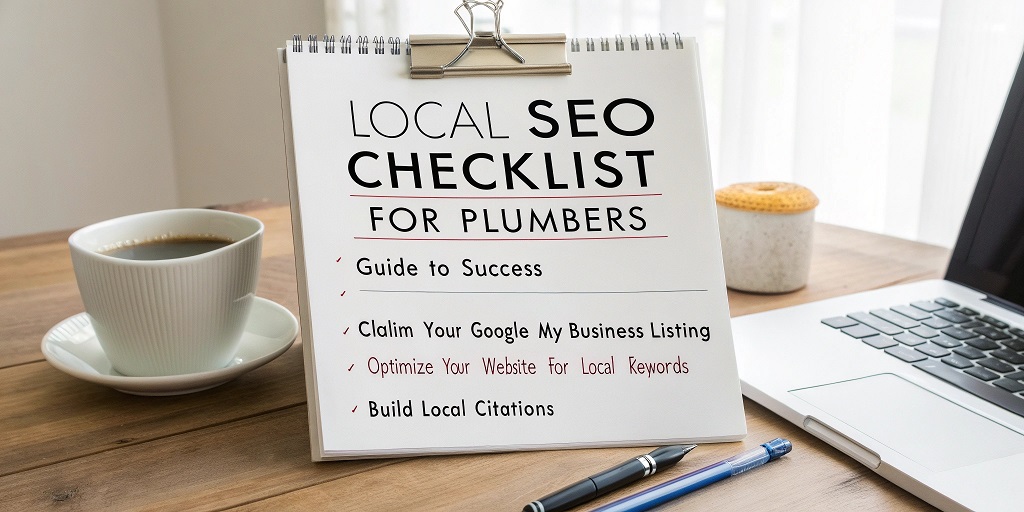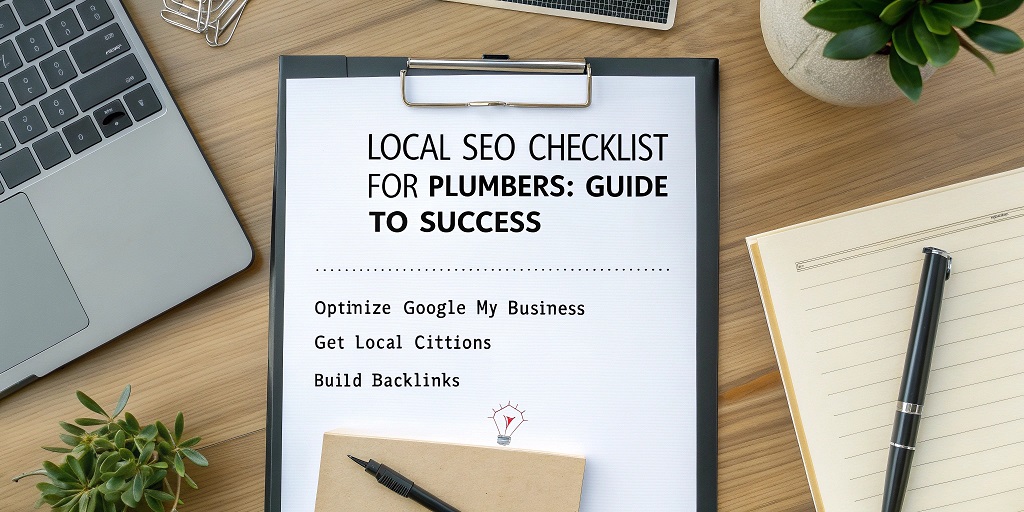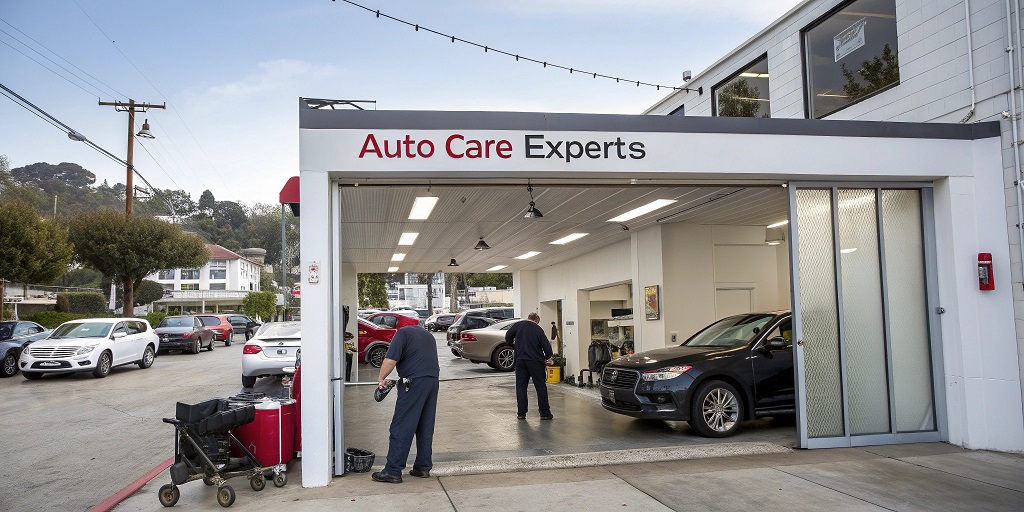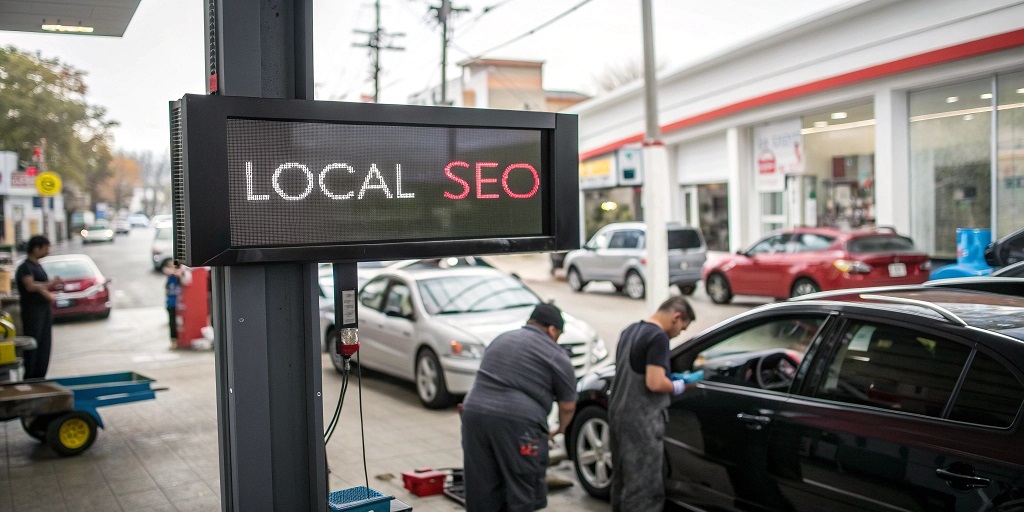
by Administrator | Jun 23, 2025 | Web Design
In today’s digital-first world, having a website isn’t just a business luxury—it’s a necessity. But not just any website will do. If you’re still relying on cookie-cutter templates and generic layouts, you may be leaving a lot of growth potential on the table. That’s where custom WordPress development comes into play. This powerful approach can not only amplify your online presence but also tailor your site to meet your unique business needs, drive traffic, and improve user experience. (more…)

by Administrator | Jun 23, 2025 | Web Design
In today’s fiercely competitive digital marketplace, your website isn’t just a digital brochure—it’s your business’s most valuable growth engine. Yet, many companies fail to leverage the full potential of their websites due to poor performance, lack of customization, or limited scalability. This is where WordPress development enters the picture. (more…)

by Administrator | Jun 16, 2025 | Local SEO
In the age of digital search, most homeowners looking for a plumber don’t flip through the Yellow Pages—they grab their smartphone and search “plumber near me.” If your plumbing business doesn’t show up in those search results, you’re missing out on a steady stream of local customers. That’s where Local SEO (Search Engine Optimization) comes in. It’s not just a marketing trend—it’s a game-changer for small service-based businesses like yours.
This Local SEO checklist for plumbers is your step-by-step guide to dominating the search results, growing your local visibility, and converting online searchers into loyal customers. Whether you’re just starting or looking to fine-tune your digital presence, this guide will help you rank higher in local searches and beat out the competition.
Why Local SEO Matters for Plumbers
Before diving into the checklist, let’s make one thing clear—local intent is king. Most people searching for plumbing services need immediate help in their local area. Google prioritizes showing the most relevant and local results, which means you have a golden opportunity to appear in front of people who need your services right now.
Here’s why local SEO is critical for plumbers:
- 76% of people who search for a local business on their phone visit within 24 hours
- 28% of those searches result in a purchase or service hire
- Local searchers are high-converting leads ready to take action
If your plumbing business isn’t optimized for local SEO, you’re leaving money on the table.

Local SEO Checklist for Plumbers: Step-by-Step Guide
Optimize Your Google Business Profile (Formerly Google My Business)
Your Google Business Profile (GBP) is the backbone of your local SEO strategy. It’s what shows up in the map pack and when customers search your business name.
Action Steps:
- Claim and verify your Google Business Profile
- Use your exact business name, address, and phone number (NAP)
- Choose relevant categories (e.g., “Plumber”, “Emergency Plumber”, “Drain Cleaning Service”)
- Write a keyword-rich but natural business description
- Add high-quality photos of your team, van, tools, and completed jobs
- Keep the hours of operation accurate
- Enable messaging to communicate with leads directly
- Add services and service areas
Bonus Tip: Ask happy customers to leave a review—Google favors businesses with frequent, high-quality reviews.
Consistent NAP Citations Across Online Directories
Search engines use NAP consistency to verify your business’s legitimacy. If your business info is inconsistent, it can confuse search engines and lower your local ranking.
Action Steps:
- List your business on major directories like Yelp, Bing Places, Apple Maps, Angi, HomeAdvisor, and local chambers of commerce.
- Use a tool like BrightLocal or Whitespark to identify and fix inconsistent citations.s
- Ensure your NAP matches your Google Business Profile exactly
Secondary Keywords to include: plumbing services near me, local plumbing company, emergency plumber
Create and Optimize Your Plumbing Website for Local Search
Your website is the foundation of your online presence. It should be SEO-optimized, user-friendly, and mobile-responsive.
Action Steps:
- Use local keywords in your title tags, meta descriptions, H1 headers, and content (e.g., “Plumber in Brooklyn, NY”)
- Create separate service pages for each service (e.g., water heater repair, leak detection, pipe replacement)
- Include your service areas (cities, neighborhoods, ZIP codes) naturally throughout your content
- Add a clear Call to Action (CTA) on each page (e.g., “Call now for a free plumbing estimate”)
- Use schema markup (LocalBusiness schema) to help Google understand your business details
Example Local SEO-Optimized Title Tag:
“Emergency Plumber in Houston | 24/7 Local Plumbing Services”
Set Up a Blog with Local and Informative Content
Content marketing isn’t just for tech companies. A blog can boost your local SEO, position you as a helpful expert, and answer common plumbing questions.
Post Ideas:
- “How to Prevent Frozen Pipes in [Your City]”
- “5 Signs You Need a Water Heater Replacement”
- “DIY Drain Cleaning Tips from a [City] Plumber”
SEO Tip: Incorporate LSI keywords (Latent Semantic Indexing) like “licensed plumber,” “affordable plumbing,” “leaky faucet repair,” and “drain unclogging” to support your main keyword without stuffing.
Build Local Backlinks and Citations
Backlinks—links from other websites to yours—signal trust to Google. The more quality backlinks you have from local sources, the better.
Action Steps:
- Reach out to local blogs or news sites for guest posts or features
- Join local organizations or sponsor community events (and get a backlink!)
- Get listed in local business directories and trade associations
Local backlinks from sources in your city or region are highly valuable for Local SEO.
Encourage and Manage Online Reviews
Positive reviews build trust and influence both rankings and conversions. Google uses reviews to assess your reputation.
Action Steps:
- Ask every satisfied customer for a review (in person, via email, or SMS)
- Respond to all reviews—especially negative ones—professionally and promptly
- Highlight your best reviews on your website and social media
Tip: Make it easy for customers to leave reviews by sharing a direct Google review link.
Use Location Pages for Multiple Service Areas
If you serve multiple cities or suburbs, create dedicated location landing pages. This helps you rank for more local searches.
Structure Example:
- yourplumbingbusiness.com/plumber-in-dallas
- yourplumbingbusiness.com/plumber-in-arlington
Each page should include:
- Unique content about that location
- Local testimonials or reviews
- Specific services offered in that area
- Google Map embed with the location
Avoid duplicate content—each page should be tailored to that city.
Implement On-Page SEO Best Practices
Even your website content needs to signal location and service intent to Google. Make sure you’re using on-page SEO best practices.
Checklist:
- Use target keywords in headings (H1, H2, etc.)
- Optimize images with alt tags (e.g., “Houston emergency plumbing repair”)
- Use internal links between blog posts and service pages
- Use clean, descriptive URLs (e.g., /drain-cleaning instead of /service1)
- Improve page speed (use tools like Google PageSpeed Insights)
Track Your Local SEO Performance
You can’t improve what you don’t measure. Use analytics tools to track what’s working and what needs improvement.
Tools to Use:
- Google Analytics: Track site traffic and behavior
- Google Search Console: Monitor keyword performance and technical issues
- Google Business Profile Insights: Track search views, direction requests, and calls
- Local Rank Trackers like BrightLocal or Whitespark to see your ranking by location
Look at the data monthly to refine your strategy.
Common Local SEO Mistakes to Avoid
- Keyword stuffing – Google penalizes unnatural, repetitive content
- Neglecting mobile optimization – Over 60% of local searches happen on mobile
- Using stock photos only – Use real images of your team and work
- No local content – Generic content won’t help you rank locally
- Fake reviews – These can lead to account suspension or penalties
Final Thoughts: Boost Your Plumbing Business with Smart Local SEO
The plumbing industry is competitive, but with the right local SEO strategy, you can attract more customers without spending a fortune on ads. This checklist provides a powerful framework to help your plumbing business climb the local search rankings and convert searchers into paying clients.
Whether you’re a solo plumber or managing a small team, investing in local SEO today will pay off in steady calls and booked appointments tomorrow.
✅ Ready to Grow Your Plumbing Business?
Now that you have the complete local SEO checklist for plumbers, it’s time to take action.
📞 Need help with local SEO for your plumbing business? Contact a local SEO expert or start optimizing your Google Business Profile today.
💬 Got questions? Drop a comment or share this guide with a fellow plumber looking to grow online!
Start showing up when people search for “plumber near me”—because your next customer is already looking for you.
Read More: High-Quality Link Building Services for Small Businesses

by Administrator | Jun 16, 2025 | Local SEO
The Shift Driving Local Auto Shops Online
In today’s digital-first world, even the most hands-on industries like auto repair are being transformed by technology. One major game-changer? Local SEO (Search Engine Optimization).
As more drivers turn to Google and Google Maps instead of yellow pages or word-of-mouth to find nearby mechanics, local SEO has become a vital lifeline for auto repair businesses. If your shop isn’t optimized to appear in local search results, you’re likely missing out on hundreds of potential customers each month. But with the right strategy, you can dominate your local market—even against national chains.
In this guide, we’ll explore how local SEO is revolutionizing the auto repair industry, the benefits it offers, and the steps your shop can take to get ahead. Whether you own a single garage or manage multiple service centers, understanding and applying local SEO could be your most profitable move in 2025.
What Is Local SEO and Why Does It Matter for Auto Repair?
Local SEO is a digital marketing strategy focused on optimizing a business’s online presence to attract more customers from relevant local searches. These searches include keywords like:
- “auto repair near me”
- “brake service in [city name]”
- “oil change [zip code]”
Google uses location data and proximity to deliver highly relevant results. That means if your business is optimized for local SEO, you’ll appear higher in the map pack and organic results, increasing visibility, trust, and foot traffic.
Key Statistics That Prove Local SEO Works:
- 46% of all Google searches are seeking local information. (Source: Google)
- 76% of people who search for something nearby visit a business within 24 hours. (Source: Think with Google)
- 28% of local searches result in a purchase. (Source: Google)
For auto repair shops, this means being visible online can directly lead to more appointments, repairs, and long-term customer relationships.

How Local SEO Is Transforming Auto Repair Shops
Let’s break down the real impact of local SEO on auto repair service providers.
Increased Visibility in Google’s Local Pack
When someone searches for “auto repair shop near me,” Google shows a map with the top 3 local listings—this is the Local Pack. Shops that appear here see significantly higher clicks and calls.
How to get there:
- Claim and optimize your Google Business Profile (formerly Google My Business)
- Collect consistent 5-star Google reviews
- Ensure your NAP (Name, Address, Phone number) is consistent across all platforms
- Add relevant categories like “Car Repair,” “Brake Service,” or “Oil Change.”
More Website and Foot Traffic
Optimizing for local search brings targeted traffic—people who need auto services right now. With correct schema markup, fast-loading pages, and mobile-friendly design, your website becomes a powerful lead-generation tool.
Secondary keywords to focus on:
- Engine repair
- Transmission services
- Tire rotation near me
- Auto maintenance coupons
- Certified mechanic shop
Trust Building Through Reviews and Ratings
Customer reviews are now a central pillar of local SEO. Not only do they influence your rankings, but they also build credibility. A shop with dozens of recent, positive reviews is far more likely to win over customers than one with little online presence.
Pro tip:
Encourage customers to leave reviews immediately after service. Use QR codes, SMS links, or email follow-ups. Respond to all reviews—positive and negative—to show transparency and engagement.
Domination of Mobile Search
Most auto repair-related searches happen on mobile devices. Whether someone’s stuck on the highway or needs urgent diagnostics, they’re pulling out their phone and searching.
Optimize for mobile:
- Use responsive design
- Click-to-call buttons
- Display opening hours and directions clearly
- Use location-specific landing pages (e.g., “Auto Repair in Austin, TX”)
Better Competitive Edge Against Chains
Franchised auto centers like Jiffy Lube or Firestone spend heavily on marketing. But local SEO levels the playing field for small, independent repair shops.
By optimizing for geo-specific keywords and building local backlinks, your shop can outrank corporate competitors in your neighborhood.
The Core Elements of a Local SEO Strategy for Auto Repair Shops
Here’s a step-by-step breakdown to make your auto repair shop more discoverable online:
✅ 1. Optimize Your Google Business Profile
- Fill out every section: services, photos, description, FAQs
- Post weekly updates or offers
- Use keywords naturally in your business description
✅ 2. Build Local Citations
Local citations are mentions of your business across directories like:
- Yelp
- Yellow Pages
- Facebook
- BBB
- Local auto repair directories
Make sure your information is 100% consistent.
✅ 3. Get Quality Local Backlinks
Backlinks from local websites signal authority to Google. Great sources include:
- Local chamber of commerce
- Auto bloggers in your region
- Sponsorships (e.g., community sports, events)
✅ 4. Use Local Schema Markup
Schema helps search engines understand your business. Implementing the LocalBusiness schema can enhance your visibility with rich snippets like ratings, opening hours, and pricing.
✅ 5. Publish Geo-Targeted Content
Write blog posts or service pages for specific areas you serve, such as:
- “Best Engine Repair in Brooklyn, NY”
- “Why Tampa Drivers Should Rotate Tires Every 6 Months”
This reinforces your relevance to those specific locations.
Case Study: How Local SEO Helped a Small Garage Grow
Take the example of “Johnson’s Auto Repair” in Columbus, Ohio. In 2022, they had minimal online presence and were relying solely on walk-ins and word-of-mouth. By 2024, after implementing local SEO strategies:
- They claimed and optimized their Google Business Profile
- Collected 200+ 5-star reviews within 12 months
- Launched a mobile-optimized website with service-based landing pages
- Posted weekly blogs focused on seasonal car maintenance tips for Ohio drivers
The result? Their monthly website traffic grew 8x, and they doubled the number of new customers per month.
Avoid These Common Local SEO Mistakes
Many auto repair providers make critical errors that cost them rankings and revenue:
- Ignoring or deleting negative reviews instead of addressing them
- Using inconsistent NAP info across platforms
- Keyword stuffing service pages
- Having a slow, non-mobile-optimized website
- Skipping technical SEO, like schema and internal linking
Avoid these pitfalls to maintain a healthy online presence.
Future of Local SEO in Auto Repair: Voice and AI Integration
The next frontier for local SEO is voice search and AI integration. People are now asking their phones or smart assistants:
- “Where’s the best auto repair shop open now?”
- “Who can fix my brakes near me?”
Optimizing for conversational, long-tail keywords and FAQ content will prepare your shop for this shift. Also, integrating AI chatbots for appointment booking and real-time service queries can elevate customer experience.
Conclusion: Get Found, Get Booked, Get Growing
Local SEO is no longer optional for auto repair providers—it’s essential. Whether you’re a seasoned mechanic or just launched your garage, showing up where people search matters. It directly translates to more visibility, more appointments, and ultimately, more revenue.
Now is the time to act. Start by claiming your Google Business Profile, building local backlinks, and optimizing your site for location-based searches. If you do it right, your auto repair shop won’t just survive—it’ll thrive in today’s competitive digital landscape.
🚗 Ready to Supercharge Your Auto Repair Business?
Start optimizing your local SEO today and watch your customer base grow. Need help with strategy or implementation? Contact a local SEO expert or reach out to us—we specialize in helping auto shops like yours get found, get trusted, and get results.
Read More: What is the next big thing in digital marketing?

by Administrator | Jun 16, 2025 | Local SEO
In today’s hyper-connected digital world, standing out online isn’t just an advantage—it’s a necessity. For educational institutions, whether private schools, colleges, coaching centers, or vocational training institutes, having a strong online presence can directly impact student enrollment, local community trust, and overall reputation. One of the most effective ways to enhance this presence is through Local SEO (Search Engine Optimization).
Local SEO is not just a buzzword anymore. For educational institutions that cater to specific geographic areas, mastering local SEO strategies can be a game changer. This article will explore why local SEO is vital for educational institutions, how it works, and how you can implement it effectively to boost visibility, enrollment, and trust.
What is Local SEO?
Local SEO is a branch of search engine optimization that focuses on optimizing a website to be found in local search results. This includes searches with geographic qualifiers like “near me,” “in [city],” or services tailored to a particular area.
For example, when a parent searches for “best primary school in Miami” or “top-rated coaching center near me,” the results they see are influenced heavily by local SEO strategies.
Why Local SEO Matters for Educational Institutions
Parents and Students Start Their Search Online
Before visiting a campus or calling an admissions office, most parents and students do online research. According to Think with Google, over 80% of education seekers start with an online search. If your institution isn’t optimized for local search, you risk being invisible to a significant portion of your potential students.
Hyper-Targeted Traffic Increases Conversion
Local SEO ensures that your institution is visible to people who are actively searching for educational services in your area. This high-intent traffic is more likely to convert—whether it’s filling out a contact form, scheduling a campus tour, or enrolling in a program.
Boosts Trust and Credibility
When your institution appears in Google’s Local Pack, shows up on Google Maps, and has positive local reviews, it builds trust with prospective students and parents. High local search rankings signal credibility and authority in your community.
Cost-Effective Marketing
Unlike paid advertising, local SEO brings sustained organic traffic without a continuous ad spend. For educational institutions working with limited marketing budgets, local SEO offers a long-term ROI with relatively low investment.

Key Local SEO Strategies for Educational Institutions
Google Business Profile Optimization
Your Google Business Profile (formerly Google My Business) is the cornerstone of your local SEO efforts. Ensure it is:
- Verified and claimed.
- Filled out with categories like “school,” “college,” or “training center.”
- Includes your correct name, address, phone number (NAP), and website.
- Features up-to-date photos, especially of the campus, classrooms, and faculty.
- Encourages and responds to reviews professionally.
Optimize for Local Keywords
Use local and geo-targeted keywords throughout your website. Some examples include:
- “Private high school in San Diego”
- “Nursing college near Los Angeles”
- “After-school tutoring center in Brooklyn”
Sprinkle these naturally into your content, meta descriptions, image alt tags, and headers. Avoid keyword stuffing.
LSI and Secondary Keywords to Consider:
- Education center nearby
- Accredited institutions in [City]
- Local academic programs
- Campus tours in [Area]
- Best schools in [Neighborhood]
Create Location-Specific Pages
If your institution has multiple branches or campuses, create individual landing pages for each location. These pages should include:
- Location-specific details and contact info.
- Testimonials from students or parents from that area.
- Relevant programs or events exclusive to the location.
Mobile Optimization is Non-Negotiable
More than 60% of local searches happen on mobile. Ensure your website is:
- Mobile-responsive.
- Fast-loading.
- Easy to navigate with clear call-to-actions (like “Schedule a Visit” or “Apply Now”).
Schema Markup for Educational Institutions
Adding structured data (schema markup) to your website helps search engines better understand your content. Use schema types like:
- EducationalOrganization
- School
- CollegeOrUniversity
This can enhance your listings with rich snippets, including ratings, reviews, and upcoming events.
Local Link Building
Backlinks remain a key ranking factor in SEO. Build links from:
- Local news outlets or blogs featuring your school events.
- Educational directories.
- Sponsorships with community events.
- Alumni associations or parent networks.
High-quality local backlinks signal to search engines that your institution is authoritative in your region.
Online Reviews and Reputation Management
Encourage current students, alumni, and parents to leave positive reviews on platforms like:
- Google
- Facebook
- Niche sites like Niche.com or GreatSchools.org
Respond to all reviews—positive or negative—to show engagement and care.
Local Content Marketing
Develop hyper-local blog content that answers common questions from your audience. Examples include:
- “How to Choose the Best School in Dallas for Your Child”
- “Top 5 After-School Programs in Boston”
- “Why Our STEM Program is a Leader in Chicago Education”
This not only drives organic traffic but also builds topical authority.
The Role of Local SEO in Different Types of Educational Institutions
K-12 Schools
Parents often look for schools close to home. Local SEO helps them discover your school through searches like “top elementary schools near me” or “best private school in Queens.”
Colleges and Universities
Even large universities benefit from local SEO, especially for satellite campuses, specialized programs, and local events.
Tutoring and Coaching Centers
These businesses thrive on local visibility. Local SEO can significantly boost enrollment for coaching centers offering SAT, ACT, GRE, IELTS, or other test prep services.
Vocational and Trade Schools
These institutions often target job-seeking individuals in the area. Highlighting career-focused courses with strong local demand through SEO helps attract the right audience.
Common Mistakes Educational Institutions Make in Local SEO
- Inconsistent NAP details across listings and websites.
- Ignoring Google Reviews, or worse, responding unprofessionally.
- Lack of local keywords on key pages like Home, About, and Admissions.
- Neglecting mobile optimization harms both user experience and SEO.
- Forgetting to update the Google Business Profile after changes in hours, locations, or services.
Measuring Local SEO Success
To track your progress, use tools like:
- Google Analytics – for traffic sources and behavior.
- Google Search Console – to track impressions and keyword performance.
- Google Business Profile Insights – for how often your profile shows up in local search.
- SEMrush or Ahrefs – to monitor rankings and backlinks.
Keep an eye on metrics like:
- Growth in organic traffic from local search.
- Increase in direction requests and phone calls.
- Improved local keyword rankings.
- Positive trends in online reviews.
Final Thoughts
Local SEO isn’t just a “nice-to-have” for educational institutions—it’s essential. Whether you’re running a small private school or a large college network, local SEO ensures that your institution stays relevant, visible, and competitive in a crowded digital space.
By investing time and resources into effective local SEO strategies, you not only improve your online visibility but also strengthen community ties, enhance trust, and increase enrollment.
Ready to Get Started?
Now is the perfect time to evaluate your current digital footprint and start optimizing for local search. If you’re unsure where to begin, start with your Google Business Profile, review your website’s mobile performance, and identify opportunities to include local keywords naturally.
Take the first step toward increasing enrollment and building a trusted educational brand in your community. Optimize your institution for local SEO today!
Read More: Link Building Outreach for SaaS Companies








